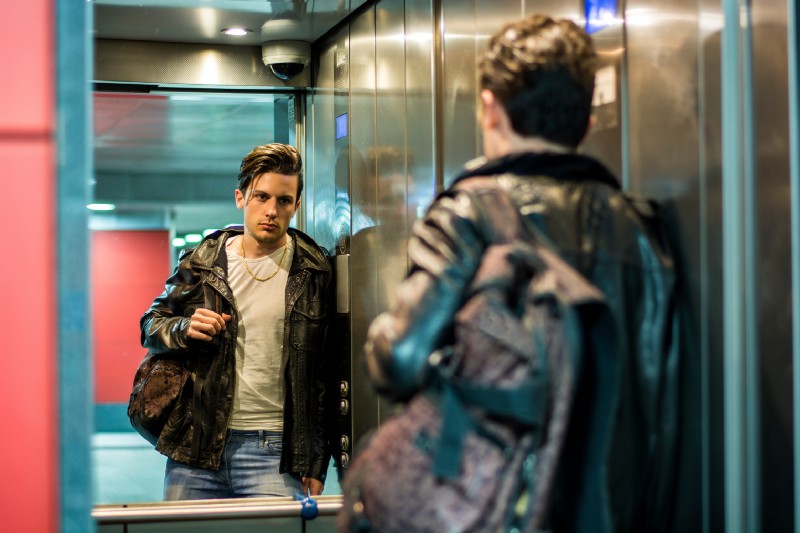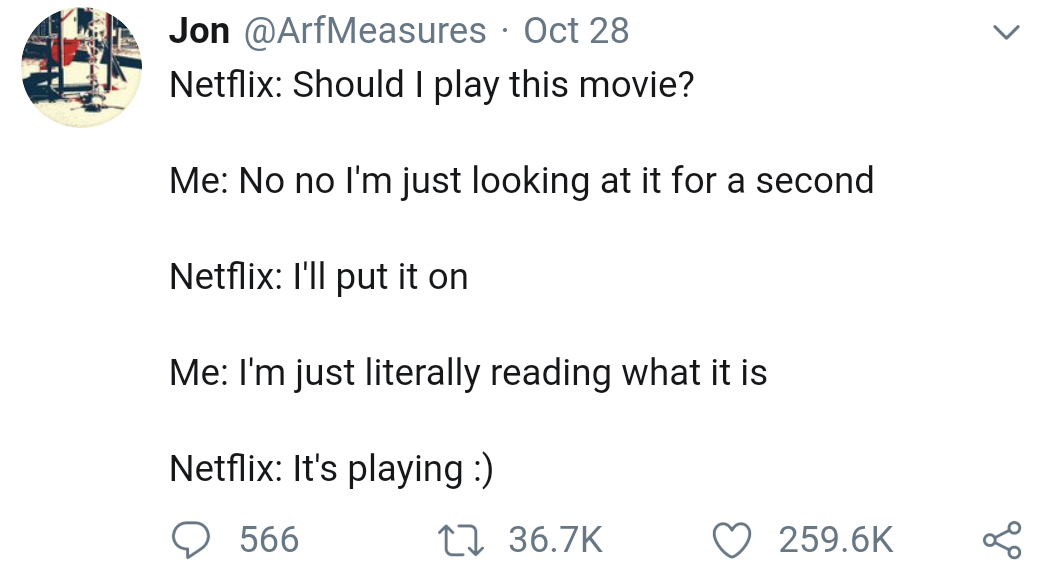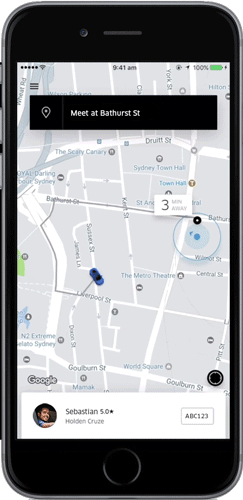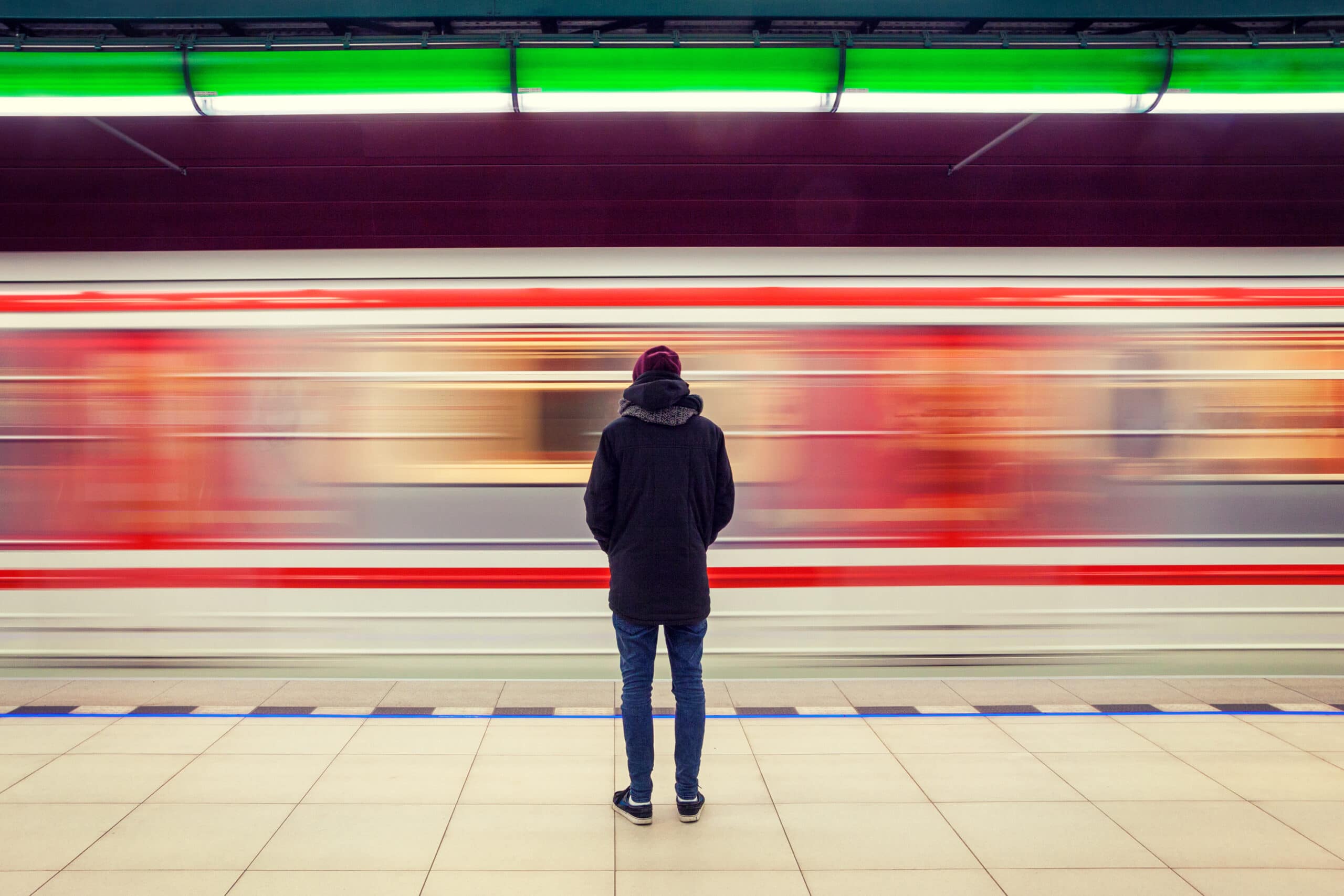Quick Definition: Idleness Aversion says we're happier when we're busy, even if we're forced to be busy.
Have you ever had to wait for a really slow elevator? It seems to take forever, right? Even longer if you don’t have your phone on you and can’t distract yourself.
When the skyscraper business began booming in the 1940s, elevators were a critical piece of technology that made huge towers like New York’s Empire State Building possible. But this amazing new technology also came with its own set of problems.
People would complain because the elevators were too slow - they seemed to take forever to arrive.
The building managers of high-rises and skyscrapers thought about making the elevators themselves faster, so people would stop complaining. But that would’ve cost tens of thousands of dollars and only shaved a few seconds off the wait time. It seemed like the world was doomed to be bored waiting on their lift… until one building had a genius solution.
They put mirrors inside - and outside - elevators.
Now, people could check out their hair and makeup while they waited. The complaints about slow elevators? They disappeared overnight. People suddenly didn’t notice the wait.

But why did elevator mirrors kill the slow elevator complaints?
It’s down a psychological principle known as Idleness Aversion.
What is Idleness Aversion?
Idleness Aversion is a psychological principle that says people are happier when they’re busier.
Even if they're forced to be busy.
Researcher Chris Hsee described Idleness Aversion this way in the paper, Idleness Aversion and the Need for Justifiable Busyness:
“People dread idleness, yet they need a reason to be busy.”
Hsee led a research team from the University of Chicago, the Antai School of Management, and Shanghai Jiaotong University to test two hypothesis about Idleness Aversion:
- People would rather be busy than idle
- Busyness, for any reason, makes us happier.
So they conducted an experiment:
The research team asked college students to leave all their belongings with a facilitator and to fill out a few surveys. So cell phones, books, magazines, backpacks were all taken away - leaving the students with nothing to distract them.
Once the students had finished the first survey, they were told to wait for 15 minutes to get the next survey. During the 15 minute wait, they were asked to drop-off their completed, first survey in a second location.
Students had a choice of two drop-off locations:
- One was right outside the room
- The other was about a 6 or 7 minute walk away
Here’s where it gets interesting.
The students were told that they had to wait out the remaining 15 minutes before they could get their next survey - and remember they don’t a cell phone, a book, or any other form of distraction. So by choosing the drop off location right outside the room, they were basically signing up to twiddle their thumbs for 15 minutes. But if they chose the 15 minute round trip to the second location, they’d at least be distracted by the walk.
Once the 15 minutes were up, the students were given a survey with only one question - “How good did you feel in the last 15 minutes?"
Busy participants - the ones who chose to walk 15 minutes to drop off their surveys - felt happier than the ones who dropped their survey off and then had to stand around and wait for 15 minutes. And in a second experiment the researchers found that even students who were given no choice and forced to be busy were also happier than the idle participants.
This is all very interesting, but how can marketers, entrepreneurs, and designers apply these findings?
Here are a few famous examples…
Real-World Examples of Idleness Aversion
How can designers and marketers apply this principle? Here are three examples:
1. Entertain like Disney
Known for their long lines, Disney Parks spends millions making waiting in line fun. Disney World’s queues have puzzles, music, and interactive designs.
For example, when you’re waiting in line for the Haunted Mansion at Disney World, you can play ghostly musical instruments, see books that fly from their shelves, and even solve a murder mystery while you wait.
You can watch a tour of this fascinating queue in the video below:
As MIT professor Dick Larson, who studies the psychology of standing in line, put it:
“You might wait 45 minutes for an eight-minute ride at Disney World, but they’ll make you feel as if the ride has started while you’re still in line.”
Disney are masters of “queuing psychology” — they know that you can’t just keep people entertained in line. People also have to feel like it’s moving. That’s why Disney hides the length of its lines by snaking them through the landscape or wrapping them around the sides of buildings.
That way, you never look at the hundreds of people in front of you and feel discouraged because of how long you think the wait is going to take. Instead, you’re entertained by your surroundings, not staring at the massive queue and calculating how long it’s going to take.
🚀 Learn what makes buyers tick
Join 8k+ of world's best marketers from brands like Disney, Coca-Cola, Google who are learning marketing psychology in <5 mins a week.
2. Engage like Netflix
Netflix’s autoplay feature gets your mind off finding something to watch, and instead gets you engaging with new shows and movies (even if it’s not by choice). Their experience forces you to watch trailers that auto-play when you dwell on the title.

Source: @ArfMeasures on Twitter
Spending hours debating what to watch becomes a lot easier when you’re entertained by clips and trailers, even if the tradeoff between annoyance and engagement wasn’t always worth it.
Thankfully you can now disable this feature, but Netflix clearly saw a benefit from the years when it was the default experience.
3. Misdirect like Uber
Waiting for your Uber — especially if you’re visiting a new town or its raining outside — can seem to take forever. It can be a stressful situation, and Uber knows that it has an outsized bearing on how good or bad a user rates their experience.
So Uber’s behavioral science team experimented with keeping users entertained with a live car animation that shows you where your driver is in real-time.

Source: Uber
Idleness Aversion: The Bottom Line
Designs that employ Idleness Aversion are all around us — from crayons and coloring mats for kids at restaurants to progress bars on websites, we’re surrounded by little things that entertain, engage, and misdirect us from the pain of waiting.
And while they can sometimes allow for a much better experience — like in Disney World’s entertaining queues — they can also make for a much worse experience — like Netflix’s much-hated autoplay.
If you want to apply Idleness Aversion to your experience, start by asking yourself:
- Where in our experiences are there moments of boredom or psychological pain? Do users or customers need to wait while something is done or for something to become available?
- How can we best address this psychological pain? Can we entertain, engage, or misdirect?
- Do our ideas to apply Idleness Aversion add value to the customer (like Disney or Uber) or annoy them (like Netflix)?

